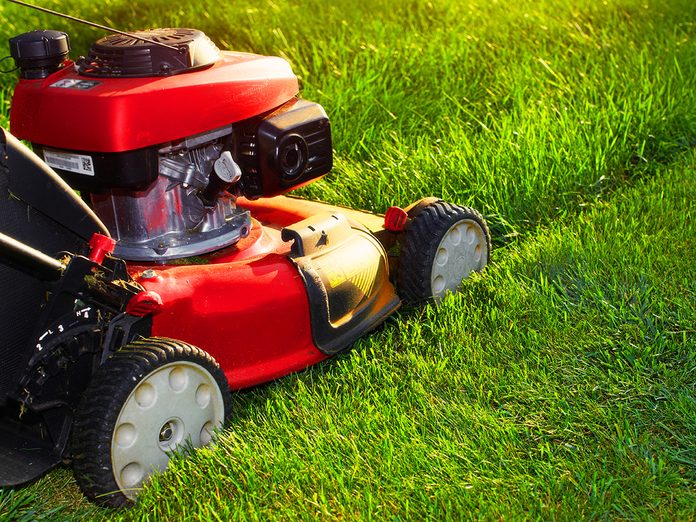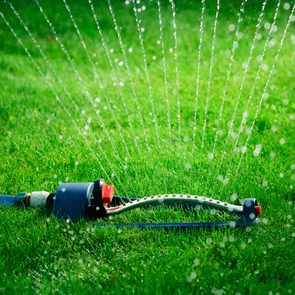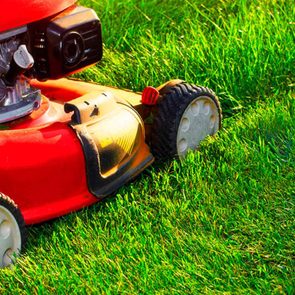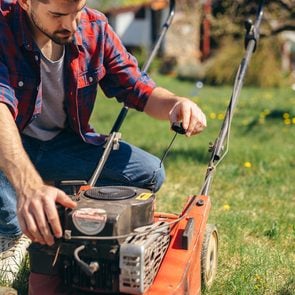This is When You Should Start Mowing Your Lawn in the Spring

Keep these factors in mind before mowing your lawn for the first time this season.
If you’ve already tuned up your lawn equipment or are in the market for a new lawn mower, you’re probably anxious to get out and start caring for your yard. But before you do that, it’s good to know when the right time is to start mowing your lawn in the spring. It’s not as simple as “when the grass starts growing.”
When Can You Start Mowing Your Lawn?
While the answer depends on your part of the country and lawn type, the general indicator will be how tall your grass is. Most grass cutting heights are between two and three inches, according to Pennington’s full list. However, there are exceptions. Just because the grass is looking a little long doesn’t mean it’s time to fire up the mower.
Wait until it’s warm enough to mow regularly. If temperatures are expected to drop below 5 degrees Celsius, you’re probably not ready to start mowing again.
The Ideal Height to Cut Grass
Figuring out the best height to cut grass depends on the type of lawn you have. Typically you should keep your grass about three inches long, with the last cut of the season taking it down to between 1-¼ inches to 1-½ inches.
Cutting grass too short before the end of the season can damage the soil and the lawn mower itself. Short grass also will not do as good of a job blocking the sun, which can dry out the soil and create dead patches.
Best Weather Conditions for Mowing
It’s generally not a good idea to cut wet grass after it rains, so mow when it’s sunny or the ground is dry. Mowing wet grass is bad for several reasons. Leaving clumps of wet clippings could smother the grass beneath. Wet grass can clog the mower, causing it to overheat, and stick to the mower’s underside, which is difficult to clean. And no matter how much traction you think your shoes have, you can easily slip on wet grass.
So don’t mow first thing in the morning if the grass is damp with dew. Wait until the lawn has dried out. Early evening is the optimal mowing time since it allows the grass the most shade to heal.
What if It Gets Cold or Snows Again?
Spring weather can be fickle. It’s hard to predict when cold weather actually is behind us. Temperatures should be consistently above 5 degrees Celsius before you attempt your first mow of the spring. However, do not mow again if temperatures drop and there is frost. Mowing frosted or frozen grass can damage your lawn, possibly killing it.
When to Fertilize and Water Your Lawn
If you fertilize twice a year, in the spring apply just enough lawn fertilizer to help green up your grass. A third application can be added in mid to late spring, combined with your crabgrass preventer. (Here’s how to get rid of crabgrass.) If you fertilize one a year, for most regions the best time is around Labour Day.
Watering your lawn properly is crucial for a lush look and feel. How much water to use and how often you should be watering your lawn depends on your soil moisture, region, grass type and other factors. Generally, grass should be watered early in the morning. Watering during the hottest times of the day allows too much water to evaporate, limiting hydration. And watering at night encourages the growth of harmful fungi.
Next, find out exactly when you should remove your winter tires.






